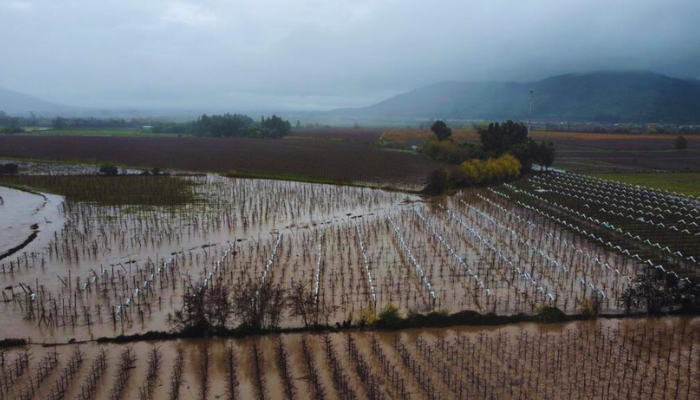
For several years now, there have been conversations about the effect of gas emissions and their direct relationship with the increase in the temperature of the planet. The main consequences of this phenomenon range from increased rainfall, extreme weather events, changes in the seasons of the year and the melting of fresh water reserves, essential for human life.
The agricultural industry is one of the many activities that have been affected by climate change; This is stated in the report “Climate Change: The impact on agriculture and the costs of adaptation”, developed by the International Food Policy Research Institute, IFPRI.
“The increase in temperatures ends up reducing the production of desired crops, while causing the proliferation of herbs and pests. Changes in rainfall patterns increase the possibilities of crop failure in the short term and reduced production in the long term. Although some crops in certain regions of the world may benefit, the impacts of climate change are generally expected to be negative for agriculture, threatening global food security,” the document explains.
According to the United Nations Framework Convention on Climate Change (UNFCCC), climate change is understood as “a change in climate attributed directly or indirectly to human activity that alters the composition of the atmosphere and that is added to the natural variability of climate observed over comparable time periods”.
Projections from the World Meteorological Organization (WMO), estimates that there is a 66% likelihood that the annual average near-surface global temperature between 2023 and 2027 will be more than 1.5°C above pre-industrial levels for at least one year. And for the next five years, there is a 98% likelihood that we will experience temperature records.
In practice, all of the above is happening; maximum temperatures have broken historical records, as well as other extreme or unusual weather events for certain seasons; Just go back to May this year in Emilia-Romagna, Italy, where heavy spring rains and hail caused severe damage to cherries, peaches, pears, kiwis and other crops.
“After the rains we have had sunny and clean days, but the cherries that suffered damage from the rains were unfortunately lost; one of the varieties is Bigarreau and also Early Lory and Sweetheart. Now we begin with the Bigarreau harvest, which in the earliest area has a red color; The medium-late varieties are in the growth phase. We are making interventions to prevent rain damage with calcium and magnesium, to improve size and color level,” Cataldo Lobascio told Smartcherry at that time.

Episodes like this were repeated in Spain, where the rains caused the loss of 80% of the Jerte Valley’s cherry production. In the face of such agricultural catastrophes, it is worth asking whether climate change will be increasingly extreme in terms of its effects on agriculture, or whether what happened in Europe during the spring could now be repeated in the southern hemisphere, putting the agri-food security of the world at risk.
Extreme weather events
Just as droughts (two consecutive years of annual rainfall less than the 20th percentile of the baseline) have become increasingly severe, projecting that by the end of the 21st century this type of event will occur more than 10 times in 30 years, they also tend to to increase the occurrence of intense precipitation events accompanied by high temperatures, with isotherms at considerable altitude. This seems to indicate unfavorable scenarios considering that the increase in the height of the zero isotherm generates the flooding of rivers in a short time, which can cause serious floods, landslides, avalanches, etc. In addition to being risky events for people, these phenomena affect agriculture, whether due to damage to irrigation systems, chemical and organoleptic alteration of water, due to the carryover of material, damage to orchards, phytosanitary diseases, etc.
For several years now, the media has shown different climate catastrophes that have occurred in different parts of the planet; more extreme tornadoes, decades-long droughts, floods, fires caused by high temperatures, among others. For example, not only did the rain affect Italy and Spain. In the middle of this year temperatures broke records, reaching almost 47°C and forcing the authorities to issue preventive alerts, something that was also replicated in the United States, with around 37°C in places like Baltimore, New York, Washington and Oregon. These last two, some of the main farming cities of the country.
According to the OECD, “tackling the climate change challenge in agriculture is a complex task, as the reduction of emissions needs to be achieved while facilitating adaptation to harsher conditions in order to minimize adverse effects on food security and nutrition, safeguard livelihoods and protect the environment. However, this still leaves considerable scope for action”.
So what can be done?
Some recommendations of the institution include further development of concrete adaptation plans that facilitate both on-farm adaptive response as well as long-run sectoral transformation to avoid or mitigate damages from recurring and increasingly severe climate shocks; reorientation of budget support towards innovation to promote emissions savings and sustainable productivity growth and ensure the emergence of new mitigation technologies, as well as new varieties and breeds more resistant to extreme events; and approach transformations for adaptation and mitigation from a food systems perspective, by also shifting consumption to better adapted and lower-emission production systems.
Of course, and as experts point out, these actions must be put into practice as soon as possible and by legislation and the public sector, if we really want to mitigate the serious damage that is already being faced.










